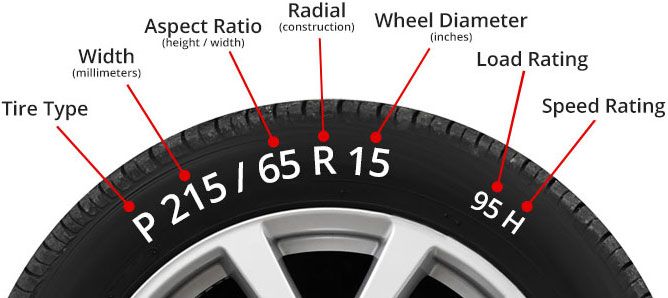Shop All Tires
Golf cart tires can be a confusing product to shop for - with so many variations and styles to choose from, how do you figure out what's right for you? Here are some general guidelines to help you understand the terminology with tires.
Most tire sizes are in the following format: 18x8-10. The first number, 18, is the full diameter of the tire
- how tall it is in inches from top to bottom. The second number, 8, indicates how many inches wide it is.
The
last number, 10, is the size of the center of the tire - in other words, what size wheel will fit the tire.
Therefore, an 18x8-10 tire is 18" tall, 8" wide, and can fit a 10" wheel.
Another size format you may encounter is the automotive format, which looks like 205/50-10. In this case, the first number, 205, is the tread width in millimeters. The second number, 50, is the aspect ratio (the side-wall measurement), and the third number, 10, is the size of wheel it can fit in inches.
A sawtooth tread has a flatter pattern than more aggressive treads, making it turf-friendly and a smoother ride. It's commonly used by golfers, street-legal drivers, and casual off-roaders. For more extreme off-roading, go with a lug, knobby, or X-tread, as they are more durable and stable.
Also, many tires feature a directional tread. If you choose a tire with directional tread, be sure the tread is installed in the right direction! The tread pattern should face the same direction on the driver and passenger
sides.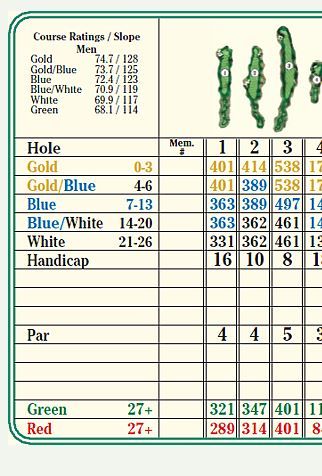 If directional tread tires are installed incorrectly, you may have difficulty steering.
If directional tread tires are installed incorrectly, you may have difficulty steering.
Offers the smoothest ride on pavement, and is a popular choice for turf applications.
Handles light off-road duty when needed, while also providing a good ride quality on pavement.
Aggressive tread blocks provide the ultimate off-road performance on muddy or rocky terrain.
The wider your tire, the more stable your golf cart will be, because it will have more contact with the ground. Some additional turning force is required when steering wider tires, although it's usually not enough for you to notice.
The taller your tires are, the more ground speed you will gain. However, keep in mind that you will lose engine or motor torque.
The ply rating is the thickness of the tire, which tells you how durable the tire will be and for what
terrain
it's appropriate.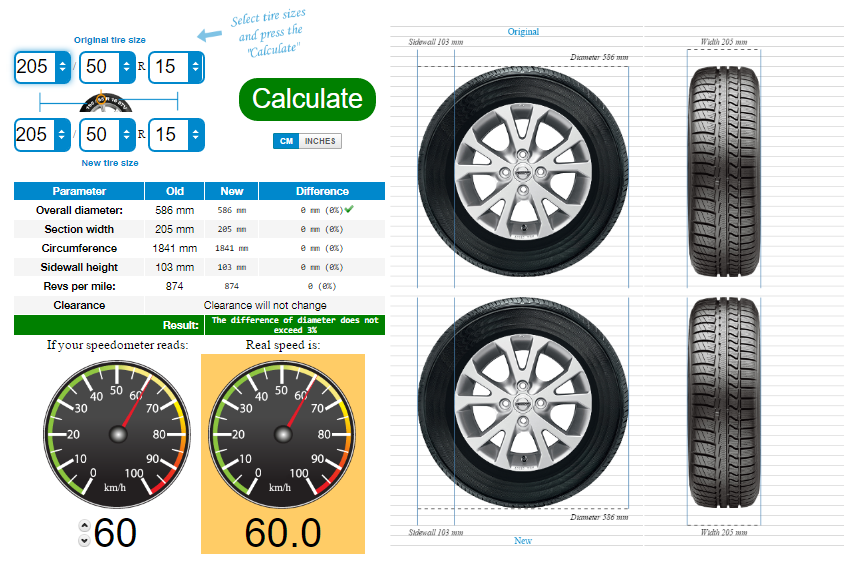
A 2-ply rating will give you a soft, spongy ride on larger wheel assemblies. A 2-ply tire is ideal for golfers and can be used for light to moderate off-roading - because they're softer, they can absorb more impact, but with extreme off-roading, you run the risk of punctures.
A 4-ply tire is tougher and more versatile - it can be used for golfing, street-legal driving, moderate to extreme off-roading, and hauling.
A 6-ply tire is often used by extreme off-road enthusiasts, because its extra thickness makes it much more puncture-resistant than 2-ply or 4-ply tires.
Skip to main content
There’s nothing like hitting the links while cruising along on your golf cart. Yet even your trusty golf cart needs a little TLC from time to time, including new or updated tires.
But did you know that not all golf cart tires are created equal or standardized? Just like different types of automobiles require different tire sizes and types, golf carts also require different tire sizes depending on the type of cart you're sporting around.
Luckily, the team at Golf Cart Garage has put together a handy guide to help you understand your options when picking out golf cart tire packages.
Before we get into the different types it's important to understand how to read golf cart tire sizes which we'll cover first.
The easiest way to understand is using a few examples so let's jump to it.
Tire sizes can be displayed a few different ways with one requiring ratios.
205/50-10"
18x8.5x8"
 5 - The width of the tire across in inches
5 - The width of the tire across in inches| Tire Size | Height | Width |
| 205/50-10 | 18" Tall | 8" Wide |
| 205/65-10 | 20.5" Tall | 8" Wide |
| 205/30-12 | 17″ Tall | 8″ Wide |
| 215/30-12 | 17.1" Tall | 8.5" Wide |
| 215/35-12 | 17.9" | 8.5" Wide |
| 215/40-12 | 18.5″ Tall | 8.5″ Wide |
| 215/50-12 | 20.5″ Tall | 8.5″ Wide |
| 205/30-14 | 19" Tall | 8" Wide |
No doubt It can be confusing trying to figure out which golf cart tire size you need.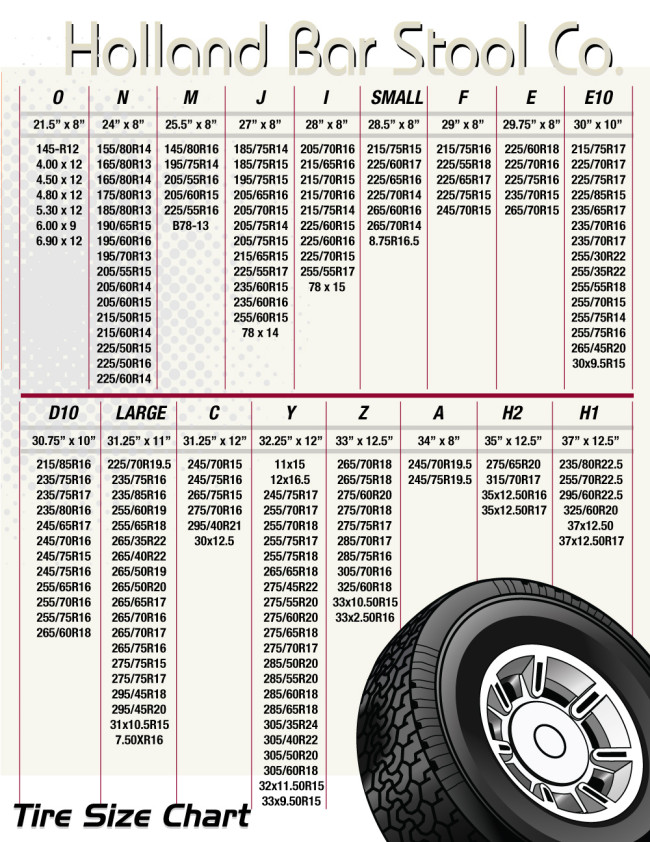 For many cart owners, this might be their first new tire purchase. But don’t worry, we’ve got you covered.
For many cart owners, this might be their first new tire purchase. But don’t worry, we’ve got you covered.
Many stock golf cart tires clock in at 18 inches tall and 8.5 inches wide when full of air at the proper tire pressure. This type of tire can be fitted on an 8-inch round hub. The two most common stock tire sizes are 8 inches wide and 7 inches wide.
However, these tires can come in other sizes as well, such as:
There are even options to customize your tires depending on your needs or make/model.
Consult a Wheel Finder
If you know the basic information about your golf cart, you can eliminate the guesswork by using an application to find the correct tire size for your golf cart.
Information you will generally need includes the following:
All of this can help you find out which tire is best suited to your golf cart.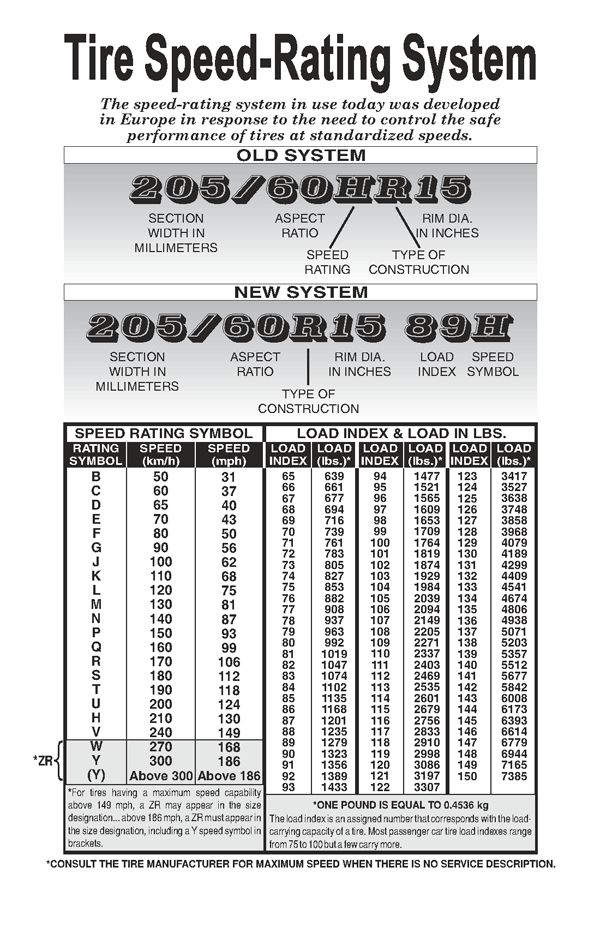 You can also keep an old tire to use as a reference. Even taking a picture of the tire may be helpful, as long as you get a close up of the tire to show any relevant information.
You can also keep an old tire to use as a reference. Even taking a picture of the tire may be helpful, as long as you get a close up of the tire to show any relevant information.
Another factor that will make a difference in your golf cart tire size is whether your cart is lifted or not. Lift kits are used to create more distance between the bottom of your cart and the ground. This is useful for all-terrain situations.
If you have a lifted cart, this will also affect your golf cart tire size. Lifted carts usually require larger tires or ones that are offset to make up for the height differential.
Some wheels have an offset that needs to be accounted for. Dealing with wheel offset might seem a bit frustrating at first. But let’s break down how to figure this out…
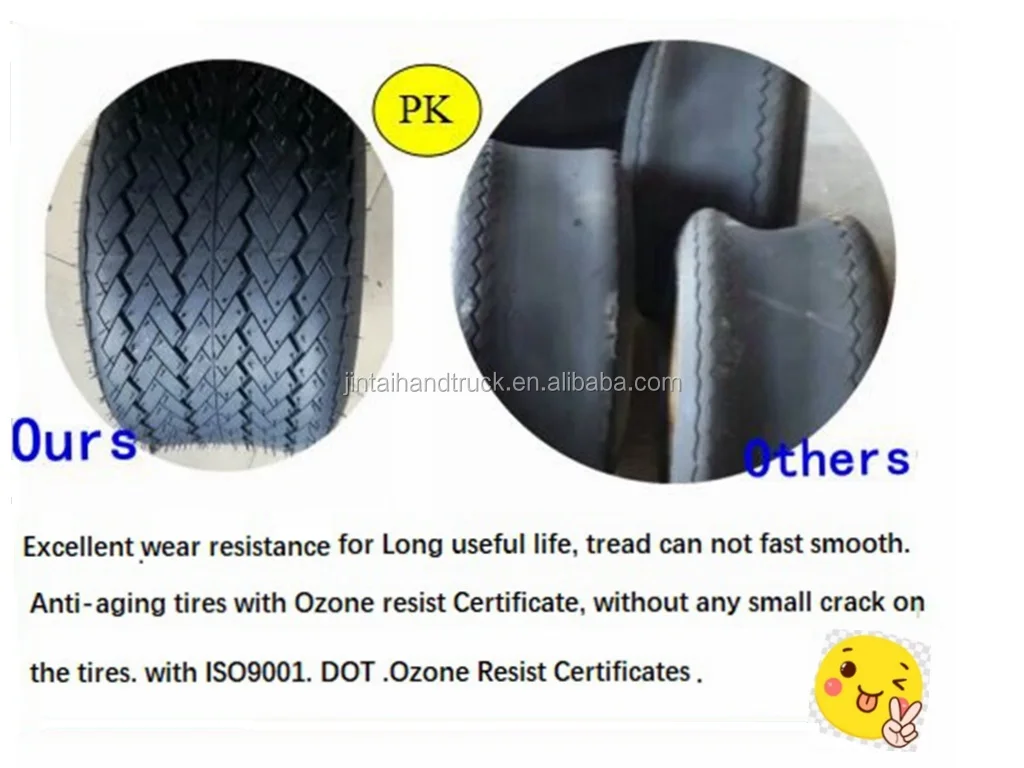
There are two profiles (referring to the kind of tire tread) that golf cart tires are available in:
By knowing all the customization options on your golf cart, you can narrow down the appropriate tires for your cart. This will help make your selection less confusing, also.
There is a lot of information to consider before purchasing new golf cart tires.
The size can depend on many different factors, including:
By knowing all of these factors, you can be sure to buy the right tire for your golf cart. Take the guesswork out by learning about your golf cart tire sizes before they need to be replaced.
Updated February 23, 2021
05/17/2018
The numbers written on the side of the rubber tire can tell the owner of the ATV everything that interests him. And if you are for some If you don't know what these mysterious numbers mean, then you can be mistaken when choosing the next set of tires. But tires directly determine whether it will go technique further or not. So, in this article you will close all the questions on about the decoding of size ATV tire .
But tires directly determine whether it will go technique further or not. So, in this article you will close all the questions on about the decoding of size ATV tire .
All tires have their own basic parameters - this is the width, height and diameter. The value of these parameters is mainly measured in inches. Exists two units:
1) If you have ATV, then this is for you. English version is the most common number system that is used when determination of tire dimensions on ATVs. All measurements here are in inches. (1 inch equals 2.54 cm). For example, the size indicated in English classification looks like this - 25x8x12 . Let's take a closer look at the meaning of each digit:
- The first digit 25 shows the height of the tire in inches;
- The second digit 8 indicates the width of the tire in inches;
- The last, third digit 12 indicates the diameter of the wheel disk, it is also measured in inches. Disc diameter on each ATV can be different. Therefore, be careful before you buy tires for ATV, see what regular disks are installed on your vehicle.
Disc diameter on each ATV can be different. Therefore, be careful before you buy tires for ATV, see what regular disks are installed on your vehicle.
And a very important point worth noting. Often our customers ask themselves: “If I have a tire size of 20x10x10, can I put instead of them 20x11x10? The answer is yes. First, you can put rubber on regular wheels with a size exceeding 1 inch in height and width. Secondly, if you want tires even wider, then for this you will need to buy other disks. But again, there are limitations. On discs of other diameters, you can install rubber, the largest is only 2 inches in height and width.
These two rules must be strictly observed, otherwise, if you try to put tires of an unacceptably large size, this may adversely affect on a quad bike. After all, the rubber will be larger and, accordingly, heavier, which does not fit the technical parameters of the ATV. In production ATVs take into account all the characteristics, so manufacturers of ATV equipment I don't recommend using bigger tires at all. But if you do decided to increase the size of tires, call our toll-free number, we we will help.
But if you do decided to increase the size of tires, call our toll-free number, we we will help.
2) Also there is another version - metric . Here the dimensions are indicated in percentage and millimeters. For example, size specified according to the metric classification - 205/80 Rx12 . Such designations are usually used on automobile tires. Let's see what's what:
- The first digit of 205 shows the total tire width in millimeters. Converting this value to inches, we will just get the number 8 (in the English version is 8 inches wide).
- The second digit 80 indicates the ratio of the height of the tire to its width, measured as a percentage. After doing some mathematical manipulations, we get the number 25 (in the English version, the height is equal to 25 inches).
- The number 12, as in the English version, shows the size disk in inches.
- Well, the letter R means that our tire is radial.
The most important thing to remember from the article is that it is not recommended to install tires of huge sizes that do not correspond to the parameters your ATV . If you want to change the tires on your vehicle, give us a call. we will help.
If you want to change the tires on your vehicle, give us a call. we will help.
There are several ways to designate tire size and dimensions, some manufacturers use inches, some millimeters, and some even both. The examples below will help you define the parameters yourself.
1. Tire width (cross-sectional width)
2. Tire height
3. Cross-sectional height
4. Rim diameter
5. Tire outside diameter
Example: 3.00-4, 3.50-6, 4.00-8, 5.20-10, 6.00-12….
The first digit (3.00) indicates the tire width. “-” indicates that the tire is bias-ply (a radial design would be R). The last digit (4) indicates the bore diameter in inches. So a 3.00-4 tire fits a 4" rim, is 3" wide, and has a diagonal design.
Example: 6-12, 7-14, 8-16, 9.5-18…
Same as above, but without the (.00) in the first part of the size. All dimensions are in inches. It is important that tires with similar sizes may not be compatible - a tire with parameters 6. 00-12 can be very different from a tire 6-12. If you have any doubts about the definition of compatibility - contact PROTEKTOR.RU managers
00-12 can be very different from a tire 6-12. If you have any doubts about the definition of compatibility - contact PROTEKTOR.RU managers
Example: 4.10/3.50-4, 4.10/3.50-6, 5.30/4.50-6…0002 This size consists of 4 parts. The first digit (4.10) indicates the tire width. The second (3.50) indicates the height of the tire. The third digit (4) indicates the fit diameter of the tire. “-” refers to the diagonal design of the tire. So a 4.10/3.50-4 tire is 4.1" wide, 3.5" high, fits 4" rims, and has a diagonal design.
Example: 11x4.00-4, 13x5.00-6, 18x8.50-8, 25x12.00-9…
The first number (11) is the outside diameter of the tire in inches. The second number (4.00) is the width of the tire in inches, and the third number (4) is the rim diameter of the tire. “-” refers to the diagonal design of the tire. So a 11x4.00-4 tire is 11" OD, 4" wide, fits a 4" rim, and has a diagonal design.
Example: 10x3, 18x4, 260x85
This marking is obsolete, but you may still encounter it. Dimensions can be specified in both inches and millimeters (usually it is quite easy to distinguish this). The first number (10) indicates the outer diameter of the tire, the second the width of the tire. The seat diameter is not indicated in the size, but can be easily calculated, since the height of such a tire usually coincides with its width. Thus, an 18x4 tire has an OD of 18 inches, a width of 4 inches, and a rim diameter of 10 inches (18 inches of OD minus 2" x 4" of tire height). The modern designation for such a tire would be the formula 4.00-10. A tire with a size of 260x85 has an outer diameter of 260mm and a width of 85mm, or 10" and 3" respectively, with a 4" bore. The modern designation would look like this: 3.00-4.
Dimensions can be specified in both inches and millimeters (usually it is quite easy to distinguish this). The first number (10) indicates the outer diameter of the tire, the second the width of the tire. The seat diameter is not indicated in the size, but can be easily calculated, since the height of such a tire usually coincides with its width. Thus, an 18x4 tire has an OD of 18 inches, a width of 4 inches, and a rim diameter of 10 inches (18 inches of OD minus 2" x 4" of tire height). The modern designation for such a tire would be the formula 4.00-10. A tire with a size of 260x85 has an outer diameter of 260mm and a width of 85mm, or 10" and 3" respectively, with a 4" bore. The modern designation would look like this: 3.00-4.
Example: 255/60-10, 195/50R13, 420/85R28
The first digit is the tire width in millimeters, the second is the profile height (percentage of the tire width), the third digit is the bore diameter in inches. If the letter R is present in the size, this means that the tire has a radial design, and “-” indicates a bias.